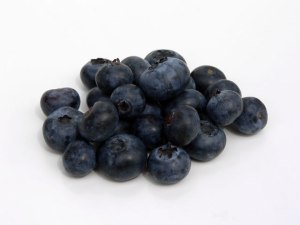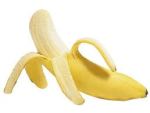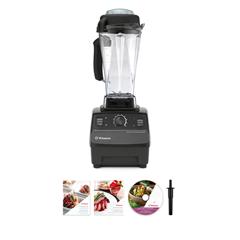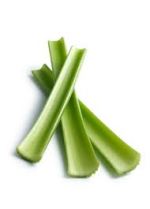It’s been a couple of weeks since I last posted and that’s because we’ve been on vacation! Yippee!!
We had a lovely time at my aunt and uncles’ place on Texada Island. We played on the beach, in the waves, relaxed, ate (way too much) and visited with family. It was our longest vacation since Henry was born, and the farthest distance away. It was also our first vacation since we started making homemade formula. For this reason, it presented some new challenges…
How do I pack Henry’s Homemade Blended Formula on an 8 hour car trip… taking 3 different ferries… to Texada Island… for a one week vacation???
In a nutshell, I needed to…
- pack enough formula for our travel day while keeping it cool enough to be safe;
- find somewhere to warm it up while traveling;
- bring or make enough for 7 days;
- have enough food left over for a travel day home and pack it home safely;
- Hopefully have at least 1/2 days worth left, so I don’t have to make more the day we get home.
I did a lot of research and ended up back at my favourite resource – the Homemade Blended Formula Handbook. There is a whole chapter focused on traveling with blended formulas, and it contained some good information. There is a further chapter on safety and sanitation.
I narrowed it down to three options:
- Make enough food in advance and freeze in 1 quart mason jars. Pack frozen jars in one or more coolers.
- Make enough food for our travel day, plus one. Pack these jars in a cooler. Bring the Vitamix blender and required food with us and prepare remaining formula on vacation.
- Prepare blended formula by canning it in 1 quart mason jars and bring enough jars for duration of vacation.
There are pro’s and con’s to each option:
Option 1 – Make enough food in advance and freeze in 1 quart mason jars. Pack frozen jars in one or more coolers.
Pro’s
- all preparations are done in advance, so I don’t have to worry about making food on vacation.
Con’s
- if jars thaw, food will spoil before we get home.
- without the blender, much harder to make formula. Would have to use my aunt’s blender, then strain and re-blend. Much higher chance his tube will plug.
- won’t have usual foods with us, so may be harder to find ingredients Henry is used to. Texada is a small island, and the general store has limited items (and high cost!). May need to take the ferry to Powell River to buy food.
- Mason jars occasionally break when frozen.
- Would likely need 2 large coolers to transport enough food; this would take up a lot of car space.
- Need to ensure food for travel day remains cold while in the car.
- Need to find someway to warm up the food that Henry will eat on travel day (cold food can cause diarrhea).
Option 2- Make enough food for our travel day, plus one. Pack these jars in a cooler. Bring the Vitamix blender and required food with us and prepare remaining formula on vacation.
Pro’s
- Similar to what we do at home, so less adjustment needed.
- Have supplies and blender with us, so ready for any unforseen challenges.
Con’s
- More work while vacationing.
- Chance blender could become damaged during travel (though slight, since we’re traveling by car, not plane).
- Need to ensure food for travel day remains cold while in the car.
- Need to find someway to warm up the food that Henry will eat on travel day (cold food can cause diarrhea).
Option 3 – Prepare blended formula by canning it in 1 quart mason jars and bring enough jars for duration of vacation.
Pro’s
- All preparations done in advance; no work needed while on vacation.
- No need to keep food cool or frozen while traveling; jars can be packed in boxes instead of coolers
- No need to find a way to warm food up prior to serving.
- Do not need to bring blender or additional required foods with – takes up less room in car.
Con’s
- I’ve never canned anything before. My mom, step-mom and mother in law all have – so I have all the required equipment, supplies and advice, but I’ve never actually done it.
- Without the blender, I have limited means of making more food if needed.
- If jars don’t seal properly and I don’t realize in advance, the food could spoil.
- I would bring extras, but if they break or something, I wouldn’t have more.
- Seems scary just because it’s new.
In the end I chose Option 2 – Make enough food for our travel day, plus one. Pack these jars in a cooler. Bring the Vitamix blender and required food with us and prepare remaining formula on vacation. While this presented the most work while on vacation, it was also the less risky. That was the was clincher for me… lower risk. It would have been nice to do the prep in advance, but that wasn’t enough to mitigate the risk involved with the other options.
So… I made up about 3-4 days of food and kept 2 days worth in the fridge and froze the rest. This way I had some frozen to help keep the cooler cold (with additional ice blocks), and if it thawed it didn’t matter – it would still be used in time prior to spoiling. I brought the Vitamix blender – we kept the original box it was shipped in, so just packed it back up in that. I also brought all the various ingredients with us. If we had been traveling to a larger place, I might have planning on purchasing food there instead (to reduce space needed in the car), but frankly it was easy to pack everything in one box and that way I had it. I also brought some canned fruits and veggies as a back up, but we had enough fresh that I didn’t need it. On about day 3 or 4 of our trip, I set aside time and made for food. I did the same thing – kept some in the fridge and some in the freezer and had enough left over for our first day home also.
While traveling, the food stayed nice and cool in the cooler. And on the trip there we managed to find nice restaurant workers each time Henry ate who kindly warmed up his food for us (thanks!). On the trip home, there was one time he had to eat his food cold as there was no where to stop.
Next Time…???
I very seriously considered canning the formula, and I think I will still try this. It just seems like such a convenient thing to have a few jars of formula in the cupboard – the healthiness of homemade formula with the convenience of commercial formula. Great for day trips, visiting friends, or short outings. No need to keep it cool and then warm it prior to serving. Canned food keeps for an extended time (months at least), and if it doesn’t seal properly when preserved, it can be frozen instead, so it’s not wasted.
I was just too nervous about trying this for our very first trip. Too much stress. I knew when I started having nightmares, that it wasn’t going to work. But this is definitely a project for the future… and one that I will certainly post about afterwards.
At some point I’m sure we’ll take a trip requiring travel by plane, and this will present a whole new set of challenges… something new to keep me up at night… 🙂
If anyone has any suggestions for traveling with blended formula – I’d love to hear them!
Cheers, Shelley
 Blueberries: super good for you, but can’t be blended for the life of me. Those pesky little seeds keep clogging this feed pump no matter how long I blend for. I’ve tried other berries (raspberries, blackberries and strawberries) and they work fine… it’s just those stubborn blueberries.
Blueberries: super good for you, but can’t be blended for the life of me. Those pesky little seeds keep clogging this feed pump no matter how long I blend for. I’ve tried other berries (raspberries, blackberries and strawberries) and they work fine… it’s just those stubborn blueberries. White rice: too sticky! Even blended with other foods, the rice coats the tubing and makes it hard for the pump to push it through. Brown rice is fine, its dense enough that blends better.
White rice: too sticky! Even blended with other foods, the rice coats the tubing and makes it hard for the pump to push it through. Brown rice is fine, its dense enough that blends better. Grapes: made the mistake of buying seeded grapes once – what a nightmare! A whole day of error messages from the pump because the seeds were small enough to get through the feeding pump, but they got jammed in his button instead. Oddly enough, even with seedless grapes, I can blend them with other foods no problem, but when I tried to puree just grapes, the skins wouldn’t breakdown and the final product was very lumpy. Henry loves the taste of grapes, but we have to be very careful he doesn’t choke on the skins.
Grapes: made the mistake of buying seeded grapes once – what a nightmare! A whole day of error messages from the pump because the seeds were small enough to get through the feeding pump, but they got jammed in his button instead. Oddly enough, even with seedless grapes, I can blend them with other foods no problem, but when I tried to puree just grapes, the skins wouldn’t breakdown and the final product was very lumpy. Henry loves the taste of grapes, but we have to be very careful he doesn’t choke on the skins. Bananas, Oatmeal and Yams: individually they are wonderful, in combination the food was so thick I could have used it for cement! I ended up having to add so much milk to thin it down that I ended up with two days worth of food. Too much volume!
Bananas, Oatmeal and Yams: individually they are wonderful, in combination the food was so thick I could have used it for cement! I ended up having to add so much milk to thin it down that I ended up with two days worth of food. Too much volume! Prunes & Raisins: prune juice – great! dried prunes – not great! They remain too chunky and regardless of how long I blended I could see little chunks floating around in the blender. Raisins work mildly better, but still found them hard to blend. If I put them in the blender first, so they were right near the blades, then it is usually okay.
Prunes & Raisins: prune juice – great! dried prunes – not great! They remain too chunky and regardless of how long I blended I could see little chunks floating around in the blender. Raisins work mildly better, but still found them hard to blend. If I put them in the blender first, so they were right near the blades, then it is usually okay. Soy Milk: this one surprised me. I don’t use it very often, and I think Henry’s having a hard time digesting it, so I’ve stopped altogether. But the times I have used a full cup of soy milk, the final blended liquid turned into a mousse-like consistency.
Soy Milk: this one surprised me. I don’t use it very often, and I think Henry’s having a hard time digesting it, so I’ve stopped altogether. But the times I have used a full cup of soy milk, the final blended liquid turned into a mousse-like consistency.
